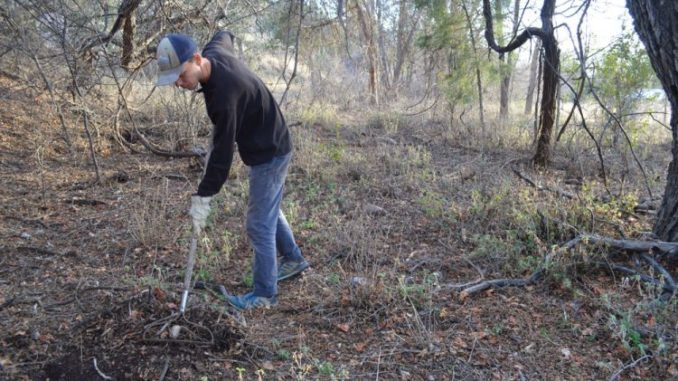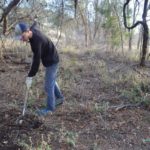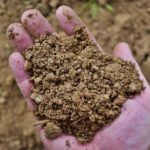
Forget the expensive marketing gimmicks, and get back to the basics. Here are some simple methods you can implement right now to provide supplemental feed for your deer herd.
These days, a deer hunter wears many hats — mechanic, butcher, biologist and farmer. The latter can take up just as much time as hunting does, and some folks dedicate thousands of dollars to growing food for their deer herd.
The results are, by any measure, often fruitful. Big, beautiful food plots work to attract deer throughout the summer, providing plenty of browse. And, come fall, some quality deer are sure to be harvested there.
But between the mega-tractors, acres upon acres of fields and expensive seed blends, the costs and time invested can quickly add up.
For many hunters, smaller parcels of property or hard-to-reach places mean those methods aren’t really practical. Plus, between hunting gear and many other everyday expenses, large plots often just aren’t affordable.
After all, Mother Nature already provides a lot in the way of deer food. Just look around: honeysuckle and blackberry abound in the spring and summer. And in the fall, acorns are more than enough to keep a deer satisfied. So, there’s a lot of value in letting nature do some work so you can keep things simple.
“All food plots do is provide a supplemental feeding source,” said Don Reed, a retired LSU Ag Center associate professor, who spent years studying whitetails at the Idlewild Research Station in Clinton. “They’re not meant to increase deer capacity or change genetics of a herd. Even the best food plot will supplement the native vegetation already around.”
With that in mind, a food plot becomes not an expensive necessity, but a practical tool that works in concert with your natural browse. If you have smaller-acreage property, a poor man’s plot can work wonders in supplementing your herd’s diet — without breaking the bank. So during the summer you can rest easy knowing the deer are getting nutrients they need — and in the fall, you’ll have a solid stand location.
And you likely won’t need a tractor or other high-dollar gear, either. With just a four-wheeler, some hand tools and a few weekends this spring and summer, you can build a productive plot that’ll serve you for years to come.
Work with nature
Find a natural opening in the tree canopy, and you’re more than likely going to find some quality forage already there. If your break in the canopy needs to be freshened up a bit to encourage growth, take a chain saw to a few trees in the area to allow more sunlight to hit the forest floor. And don’t worry about seeds, because nature has already laid the groundwork for you.
Reed said the seed bank is present in the soil and, with a little encouragement from the sun, it will sprout in no time — with some of the first being Rubus, in the blackberry and dewberry family.
“It’s easiest to use what is natural,” Reed said. “A lot of times you can utilize what is already out there. All you need to do is fertilize a briar patch or some honey suckle.”
Now is still a good time to implement this method. If you clear a spot this month, by July or August you should see native browse sprouting.
“Once those honey suckles and blackberries establish themselves, you can fertilize it and it’ll grow quicker,” Reed said. “These are perennial plants, so they’ll be there for years.”
Reed advised using a bag of commercial fertilizer like triple 13 (13-13-13), which contains the primary nutrients nitrogen, phosphorus and potassium. These three are critical in plant growth and help to stimulate everything from root growth to aiding in drought resistance. About 250 pounds per acre should do the trick.
For a long-term plan, Reed said to plant native soft mast trees nearby, like a persimmon or mayhaw. Both need full sun, so planting them in your cleared section of woods is an investment that will pay off down the road. Most forestry offices or nurseries will have plants available. (It’s too late to transplant any trees now — the best time to do that is in the winter when they’re dormant.)
If you’re lucky enough to already have a few of these trees on your property, think about clearing some of the canopy nearby to encourage growth of the native browse. And, those felled trees will serve as excellent cover on the perimeter of your plot.
Get a soil test
When you’re planting non-natives, it’s best to get a soil test before you do any sowing. Having the right amount of nutrients and pH in your soil is crucial to plant growth. When the ground you’re planting is out of whack, growth will be stunted and won’t offer much for your deer. All your hard work — and money — could be wasted by planting without knowing the contents of your soil.
Many folks send samples off to the LSU Ag Center Soil Testing and Plant Analysis Lab for a nominal price. Do-it-yourself kits are widely available these days, so it’s easy to pick up one at the hardware store. It will provide information on, first and foremost, pH. Typically, most plants grow well with a more neutral to slightly acidic reading of between 6.8 and 7 (0 is the most acidic on the scale, and 14 is alkaline).
“The results from the Ag Center will tell you what you’ll need to amend your soil,” Reed said. “If your soil is low in pH, as is common in the South, you have to add lime. The results will tell you how many tons per acre you need. That can be bought at a local co-op.”
The test results will also tell you if the soil needs nutrients like nitrogen or phosphorus, which can be amended by fertilizers.
“If you tell the Ag Center ahead of time what crops you’re planting, they give you site-specific fertilizer recommendations for that food plot,” said Kyle Bennet, a Lake Charles hunter who tends to 16 acres of food plots on his family’s land near Natchez, Mississippi. “They give you three options: clover, oats, and soybeans. We may be planting other varieties, but a lot of what hunters use fall into that category.”
Some people have gotten into the habit of adding fertilizers to their soil every year, despite not having their soil tested. Bennet said that can be a waste of time and money because some plants, like legumes, add nutrients like nitrogen to the soil — rendering nitrogen fertilizers useless,and potentially harming future plants.
“A soil test is a great cost-saving technique because you’re not wasting money on fertilizer you don’t need,” he said.
No tractor? no problem
If you lack the heavy equipment to turn some dirt, don’t despair. You can still have a fresh plot — all you need is Roundup and seeds. Look for an opening in the tree canopy or an old, overgrown field without much in the way of deer food. Just be sure there are at least six to eight hours of sunlight in the area each day. Cast seeds by hand in the desired area, then come back and spray the existing vegetation with Roundup.
“In no time the vegetation dies on top of the seed and creates ground cover,” Bennet said. “It’s like putting it in the dirt. That vegetation decomposes and acts like fertilizer, and it’s perfect for seed germination.”
A similar method involves burning existing vegetation, then sowing the seeds in the ash. But if you decide to go that route, use caution. Have a biologist come out and supervise, if necessary, or use the help of a few friends.
If breaking ground is necessary, though, you can use a garden tiller. Most hardware stores rent equipment with a daily rate, and a day or two should be enough time to till up some stubborn ground on a plot only an acre or two in size.
If time is short, several companies sell discs that are designed specifically for a four-wheeler. While most aren’t built to break heavy soil, it’ll get the job done. “There are also seeders for ATVs,” Reed said. “That’s a great option if you don’t have access to a tractor or larger equipment.”




